New Delhi: A large wood-carved balcony is the first artefact at the entrance to a new exhibition about the Sindhi experience of the India-Pakistan Partition. A common design from Shikarpur, Pakistan, it allowed Sindhi women from enclosed homes to engage with the world outside. These balconies were called Muhari.
It is a smart artefact to showcase at The Lost Homeland of Sindh exhibition gallery in Partition Museum in Delhi. Through it, outsiders must now enter the very private pain of the Sindhi community.
“This exhibition is quite significant. Members of the Sindhi community now think that their story should be told. They didn’t, all these years,” said Rita Kothari, English professor at Ashoka University and visiting professor at Ann Arbour, Michigan. “It had to take two to three generations to register the nature of loss. The museum has grappled with the impossibility of articulating loss.”
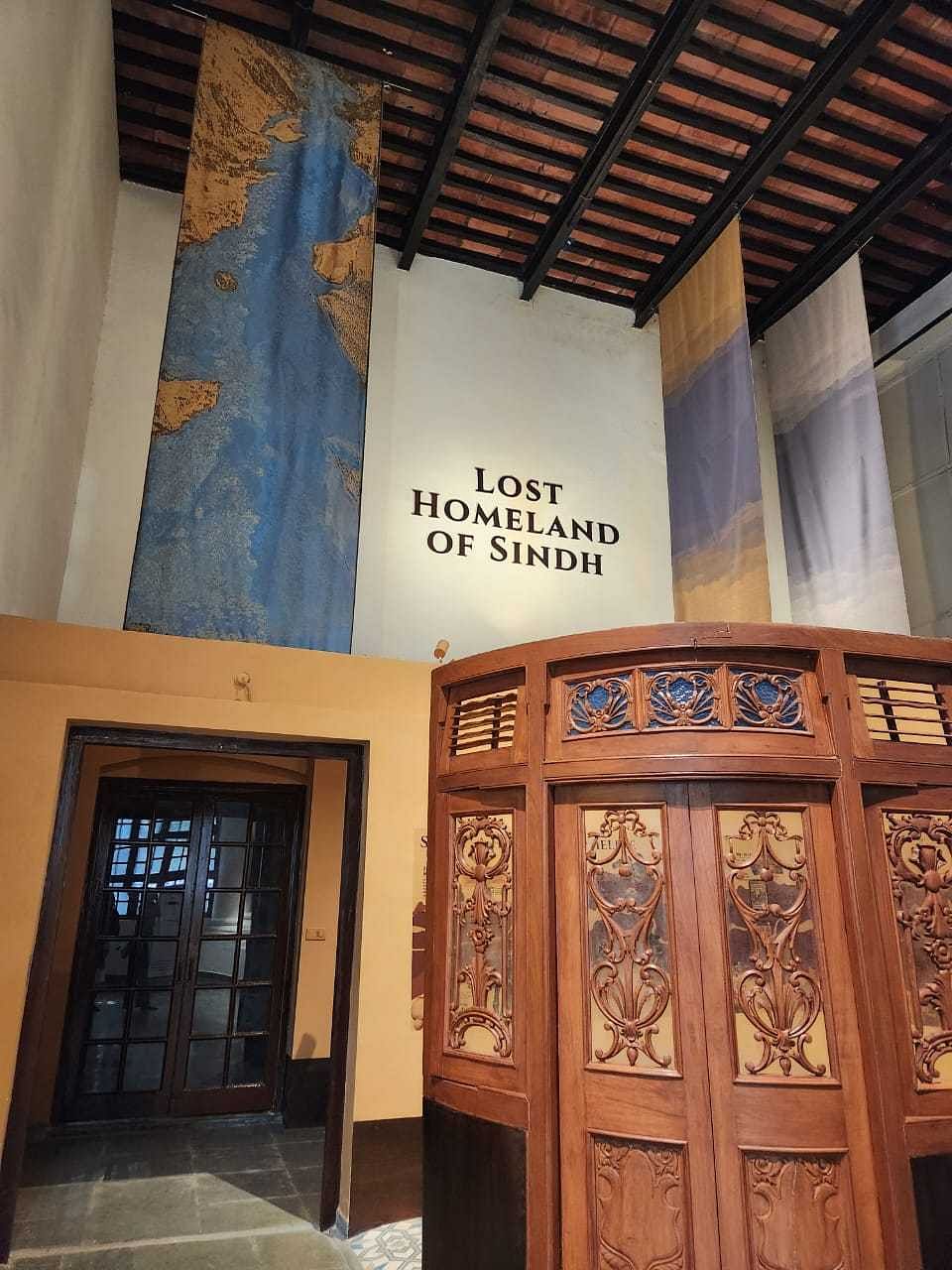
Also read:
Resilience and remembrance
The word ‘resilient’ came up several times at the opening of The Lost Homeland of Sindh gallery to describe the dominant emotion of the Sindhis toward Partition. It is this prideful self-image that often stood in the way of publicly reminiscing their pain. The dictum ‘sharanarthi nahin purushaarthi’ stuck, Kothari said. (human pursuit and resolve, not refugees).
The exhibition is the first attempt in India to curate the Sindhi experience as sufferers of Partition. The one-year-old Partition Museum in Delhi now has a separate gallery, its eighth, to pay tribute to this unacknowledged pain. It combines oral history with archival material, memory-artefacts, and contemporary art of a displaced and scattered culture.
It is a long-awaited curatorial intervention to plug a gaping hole in the Partition iconography, largely dominated by the Punjabi narrative. Even the Bengali experience was mostly muted. But the silence around Sindhis has been deafening.
“This was a very important but missing component of the Partition narrative,” said Kishwar Desai, Founder, Partition Museum and Chair of The Arts and Cultural Heritage Trust. “Sindh was always left out of the narrative, perhaps because it was entirely left behind in Pakistan. This exhibition needed to be done.”
Another reason could be that the Sindhis are scattered all over the world and a memory-keeping community didn’t emerge organically in one geography.
“There was no Sindh in India, unlike Bengal and Punjab,” Kothari explained. Their Partition experience was also not as violent as that of Punjab, making the evidence of impact slower to emerge.
Also read:
A Sindhi swing & a sari
A giant handmade map of the Sindhi banking and merchant network from 1750 to 1947 welcomes the visitor. It signals that this is an entrepreneurial, mercantile community of affluence that was displaced. Their banking and trade route spanned from Kobe in Japan to the Middle East.
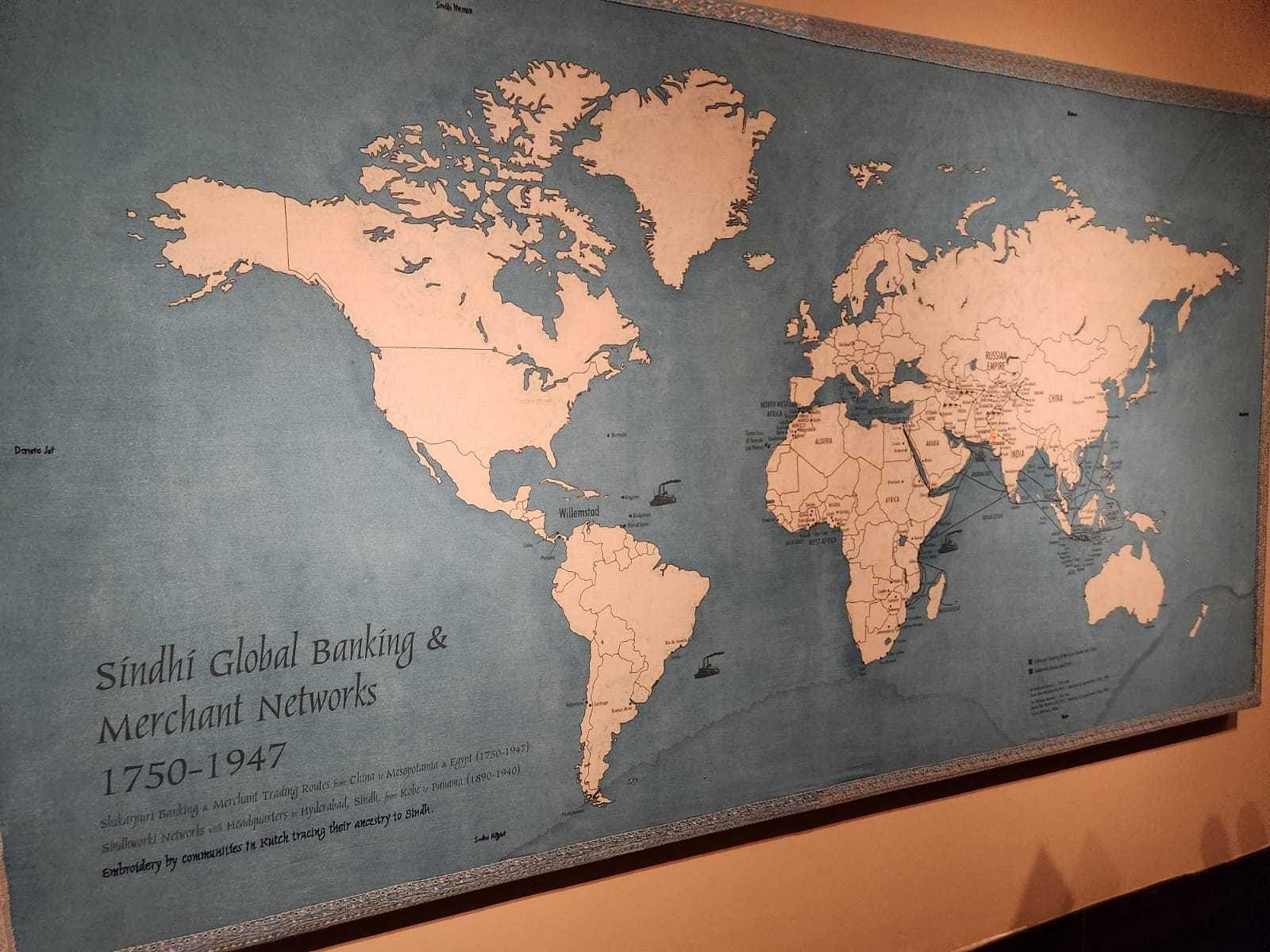
But the non-Muslim Sindhis who came to India didn’t just lose a house or farm or jewellery. They lost an entire homeland forever, as Narayan Bharti wrote in the haunting story titled The Claim about a Sindhi man who goes to a clerk at the refugee camp to fill out a compensation form for all that he had lost. When the clerk asks him the details about the haveli he has lost, he replies that he has lost all of Sindh province.
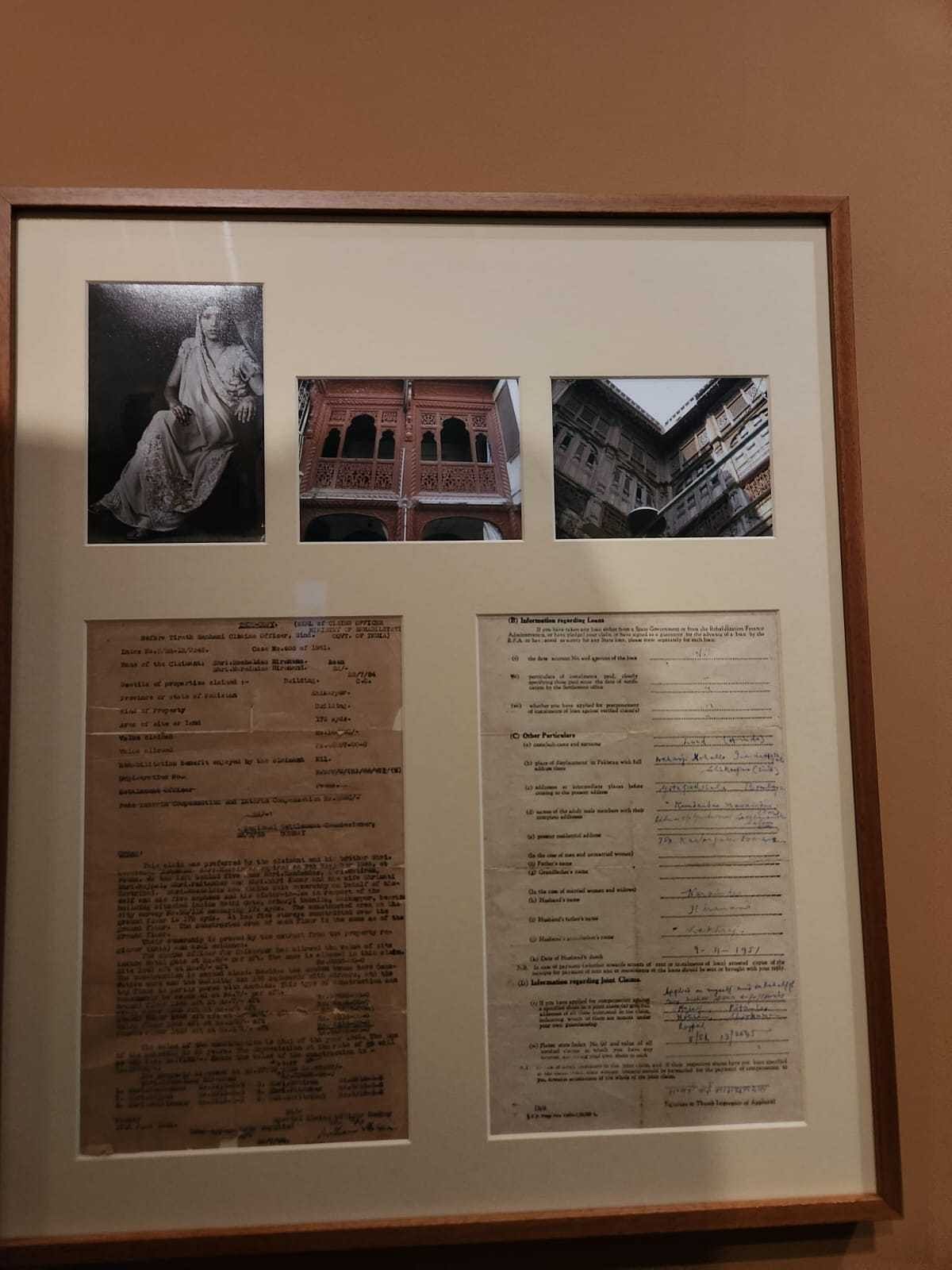
At the exhibition, a hand-filled claim form—case no 405 of 1951 by Seth Naraiandas Hiranand—is displayed prominently with images of a Shikarpur haveli left behind.
Another map of Sindh shows different regions marked by patterns of Ajrak, a traditional block printing technique believed to be from the era of Mohenjo Daro.
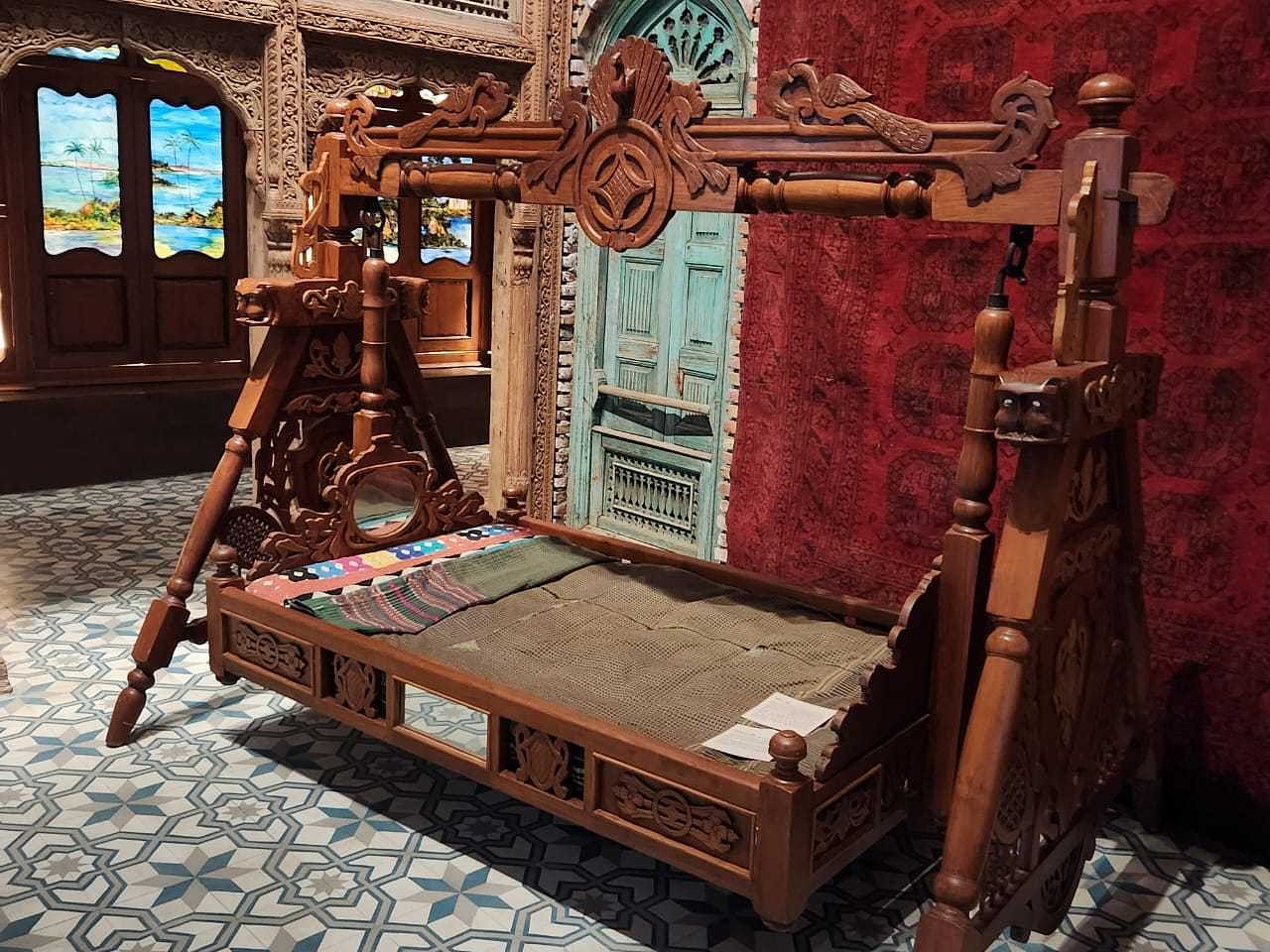
Other artefacts include family belongings such as a Bukhara carpet, and peengho—a traditional wooden Sindhi swing. The exhibition said that many families miss their family peenghos, which were too big and heavy to carry when they were fleeing Pakistan. A gentleman’s red velvet vanity case, haveli doors, prayer books and Jhule Lal shrines, wedding saris, wedding announcements and photographs, line cupboards with Roman design sliding doors, nose ring, braid decorations, lacquered bowls and vases, and metal traveling trunks.
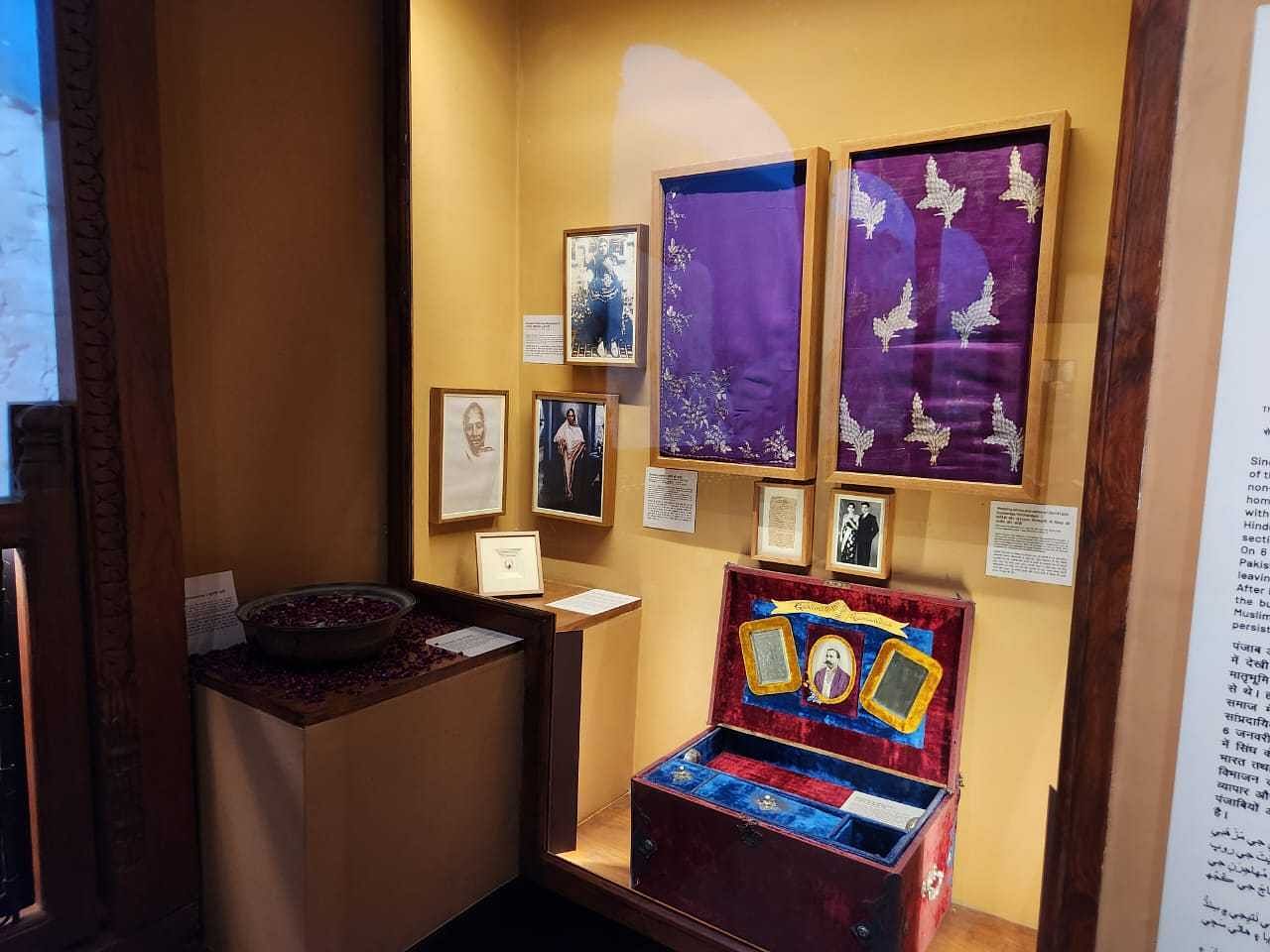
The exhibition also featured a clip from Abana (1956), the first Sindhi-language film, capturing the refugees’ spirit of resilience.
But the difficulty of belatedly collecting Sindhi Partition-related artefacts is not lost on the community.
“It’s very hard to find. Most homes probably have one photograph. They have nothing, they came with nothing,” said curator Aruna Madnani, who is the founder of the Sindhi Culture Foundation.
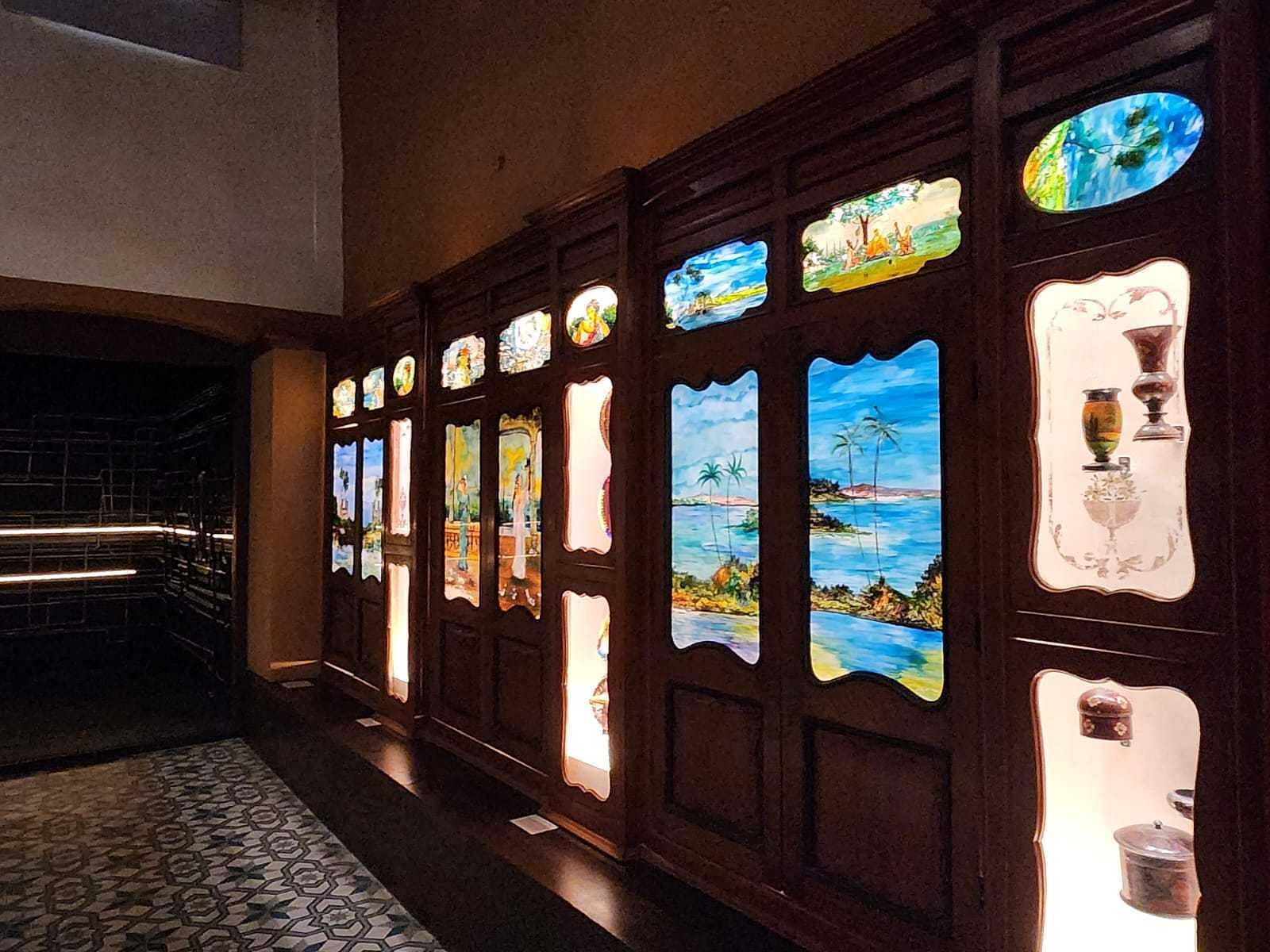
Pratibha Advani, a former media professional and the daughter of BJP leader LK Advani, recounted the story of how her father rolled up two or three sets of clothes in a towel and crossed over to the other side of the newly drawn, blood-stained border.
More than a museum
The organisers said the exhibition was just a small, first step. They hope it will grow into a resource hub for community conversations, reconciliations, and exchanging ideas about heritage preservation.
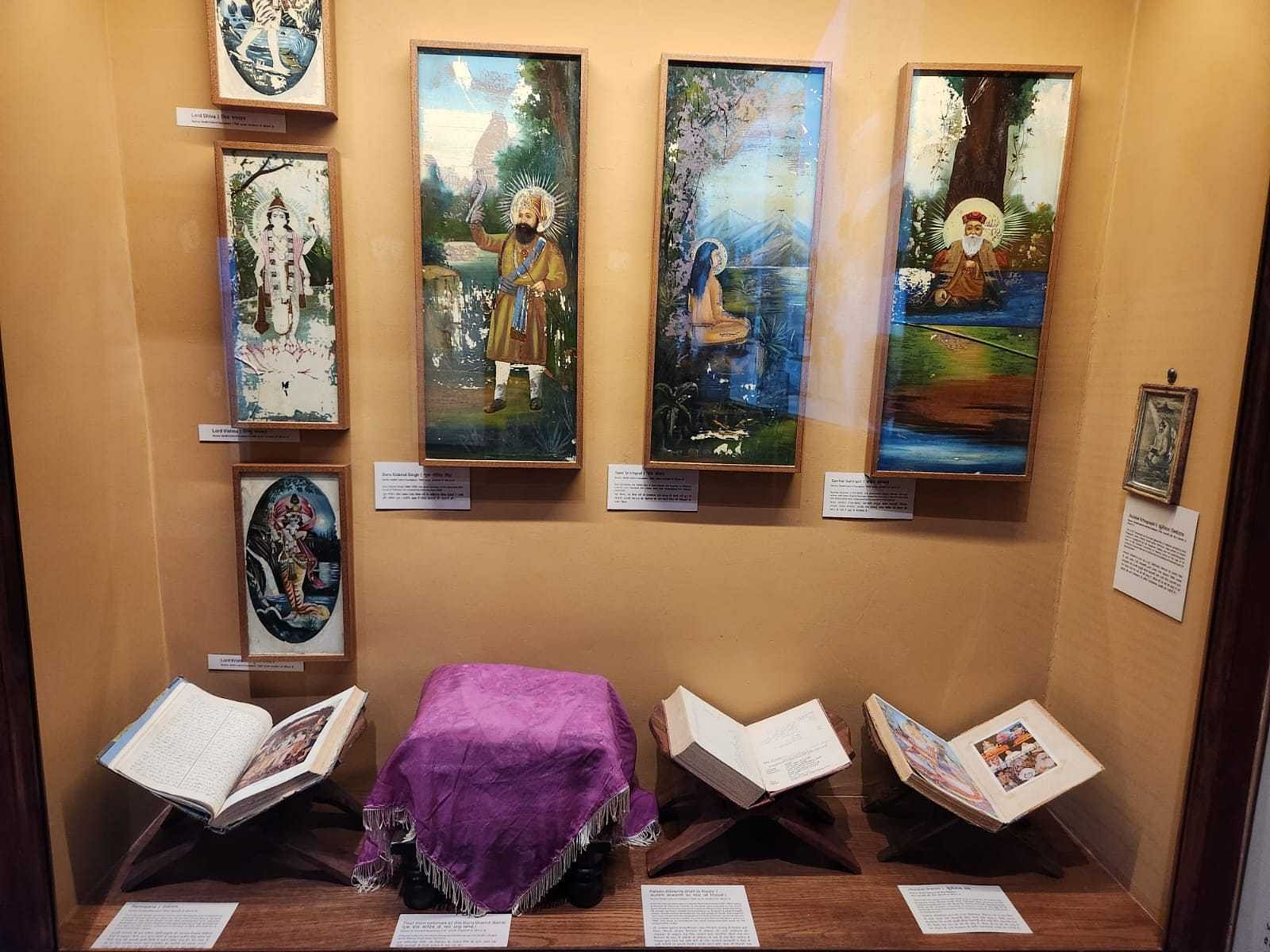
“There’s a lot more to be done. This is just a beginning,” said Jitu Virwani, Chairman and Managing Director, Embassy Group, and a donor. He spoke about a 40-acre complex called the Jhulelal Tirathdham that is being developed in Bhuj, Gujarat. It will include a larger Sindhi community cultural centre and museum.
(Edited by Ratan Priya)



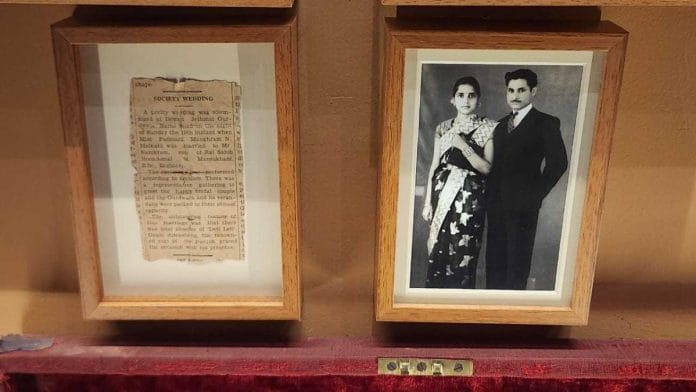



Hindus are not a protected group. When they are driven out for religion it is always discussed in divided form. Sindhis Punjabis Bengalis Kashmiris. These identities were not relevant. They were driven out for being Hindu
We don’t even know the tiny fraction of stories told by those who lived through the horrors of 1947 – in the Punjab, Kashmir, Sindh, or elsewhere.
This is one reason I consider the Partition Horrors Remembrance a meaningful step towards remembering past wounds as a first step towards healing.
There should be one on Kashmiri Pandits too. Also will the print dare do opinion pieces on them? Human interest stories? Or are those only reserved for if you are a muslim?